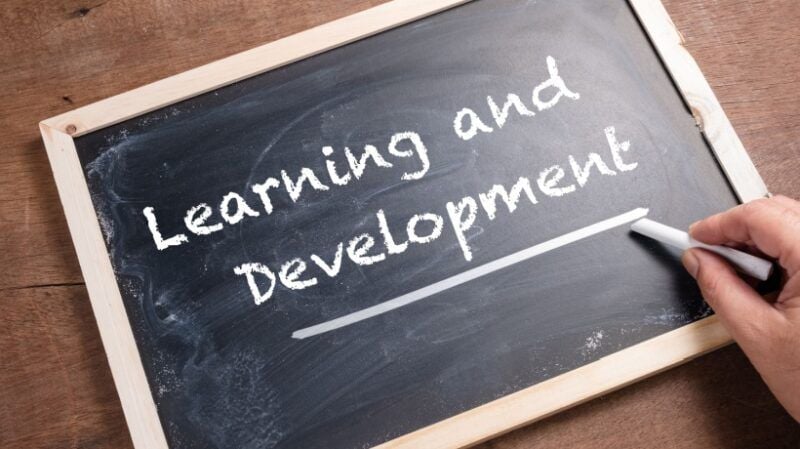
The New Era Of L&D: The Heart Hasn’t Altered
Let me share something I have actually been seeing up close: Understanding and Advancement (L&D) isn’t simply progressing, it’s transforming at a pace most of us haven’t experienced before. Think about it. Five years ago, we were talking about online understanding as a support group. Today, it’s the foundation of how organizations reskill, preserve, and equip their labor force. Roles are changing, abilities are continuously being redefined, and advancement plans look nothing like the ones we developed a years back.
As an L&D professional, I frequently listen to leaders ask: “What are one of the most useful advancements I can try for my labor force? Just how do I also recognize what skills to focus on?” If you’ve been duke it outing these questions, you’re not the only one. Let’s unpack what’s occurring and where you can concentrate your energy.
1 From Job Duty To Abilities: The Shift That Changes Whatever
We used to develop finding out around static job summaries. Today, job does not fit neatly into those boxes any longer. Organizations are relocating towards skills-first techniques. Why? Since skills are truth money of development.
- Ability taxonomies and structures (like those built into modern LMS systems) are helping services identify what’s missing out on today and what will be important tomorrow.
- Interior skill marketplaces are emerging, where staff members are matched to tasks based upon abilities as opposed to task titles.
- For you as a leader, this suggests reskilling isn’t a side project; it’s your greatest retention strategy.
2 AI Is Right here, But It Requirements Guardrails
AI is no more futuristic; it’s currently inside your LMS and finding out method, nudging students with customized referrals. And when done right, it feels like magic.
- Customized pathways
AI assesses student behavior and suggests training courses aligned with occupation goals. - Time-saving automation
Admin tasks like registration, reporting, and responses loopholes are coming to be simpler. - Ability exposure
AI-powered control panels give leaders quality on workforce preparedness.
However right here’s my caution: AI is only as strong as the information and governance behind it. Wonder, experiment, however likewise ask suppliers tough questions about openness, predisposition, and information safety and security.
3 Skills-Based Knowing Satisfies Human-Centered Style
While modern technology can scale, human-centered style makes it stick. The advancements I’m most thrilled about are the ones that blend tech with compassion:
- Microlearning and nudges
Tiny, just-in-time ruptureds of understanding that respect learners’ hectic schedules. - Discovering in the circulation of work
Combinations with MS Teams, Slack, or CRMs where employees currently invest their time. - Career-linked discovering
Growth prepares that straight attach skills discovered to promotions or brand-new possibilities.
These aren’t just “nice-to-haves.” They’re ending up being anticipated.
4 Immersive Knowing Is No Longer An Experiment
Online Reality (VR) and Increased Truth (AR) were when buzzwords. Today, they’re sensible devices, together with much-utilized simulations, scenario-based knowing, and gamification, especially for remote and global groups.
- Visualize a frontline employee exercising security protocols in virtual reality, risk-free.
- Or a new supervisor stepping into a gamified simulation to exercise leadership discussions.
These immersive methods boost retention and self-confidence, particularly in high-stakes functions. And the bright side? Prices are reducing, making them extra attainable for a broader variety of organizations.
5 Collaboration Is The New L&D Superpower
Below’s the truth: in the brand-new period, L&D can not prosper in a silo anymore. The most impactful programs I have actually seen were birthed from solid partnership between human resources, IT, and magnate.
- HR gives the lens of ability and culture.
- IT guarantees systems integrate perfectly.
- Magnate connect discovering to method and development objectives.
When these voices come together, discovering ends up being a business chauffeur, not simply a HR function.
If You’re Not sure Regarding Skills Or Top Priorities, Beginning Below
Lots of leaders tell me, “I’m not also clear about which skills matter many.” That’s entirely reasonable. The landscape in this brand-new age of L&D is noisy. Below’s a straightforward strategy I recommend:
- Pay attention to your business method
What’s transforming in your market, product, or client expectations? - Check out your workforce information :
Where are people leaving? Which groups are struggling? - Start little with pilots
Pick one area, like electronic fluency, management preparedness, or consumer experience, and run a concentrated program. Measure, find out, range.
Bear in mind: you do not need to do everything at the same time. Even little, deliberate steps can produce huge surges in culture and efficiency.
Last Idea: The Heart Of L&D Hasn’t Altered
Yes, the tools, duties, and strategies are shifting significantly. But at the heart of it, also the new age of L&D is still about opening human potential. As CLOs and L&D leaders, our task is to produce environments where people really feel qualified, supported, and motivated to grow. Whether via AI-driven personalization, immersive simulations, or merely better conversations in between managers and groups, the goal remains the exact same: to assist individuals prosper to ensure that organizations can prosper.
If you’re curious concerning which developments might function best for your labor force, begin checking out. Try something little, gauge the effect, and don’t be afraid to repeat. Due to the fact that in 2025, one of the most successful L&D leaders won’t be the ones that did everything, they’ll be the ones that moved with intent.